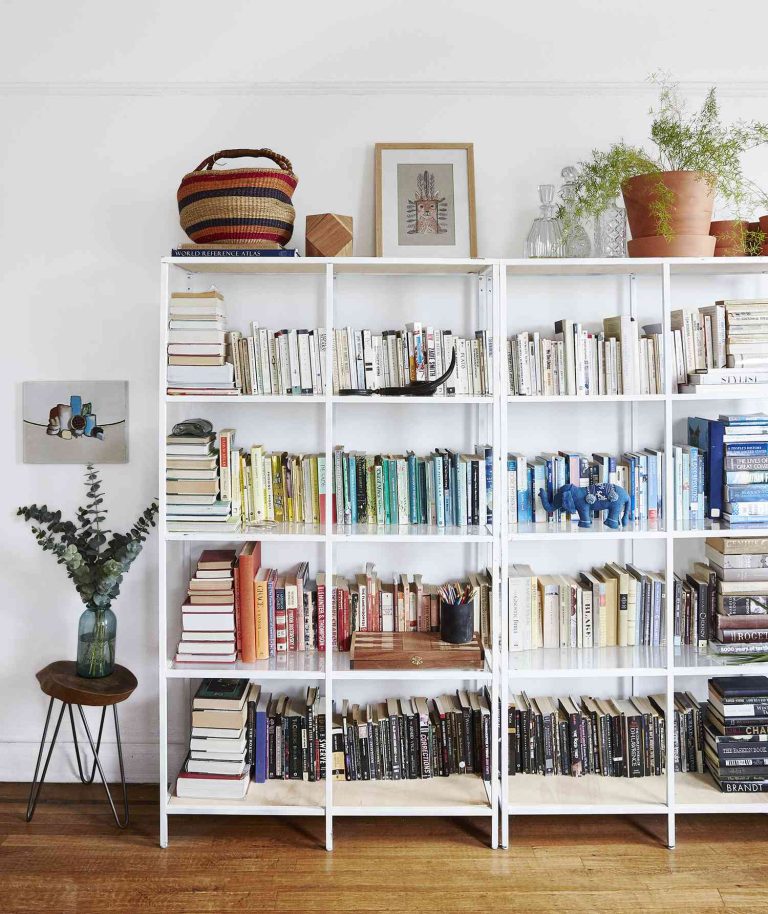Book lovers love to keep their favorite volumes in plain sight on a bookshelf. But storing your books isn't enough: just putting them on a shelf and forgetting about them. Dust, moisture, sunlight and other factors can damage them beyond repair. If you're storing your books for display or preservation, we've got all the tips you need to protect and treasure them. We'll show you how to store your books properly, on or off the shelf.
Store books in a bookshelf
Unless they're coffee table books, one of the best places to store your books is on a bookshelf in the main area of your home. When storing your books on a shelf, following a few guidelines will help keep your books in the best condition while on display.
Things to keep in mind when storing books on a bookshelf
The first thing to consider is the placement of your bookshelf: place it close to an interior wall to allow air circulation (something you need to keep your books in good condition), but leave enough space for the air to circulate. Placing the shelves next to an exterior wall can cause the temperature to fluctuate too much.
When setting up your bookshelf, make sure your books are not in direct sunlight, as sunlight can fade covers. The Library of Congress advises that books should be exposed to as little light as possible, so a dark place is best when it comes to storing your books.
When it comes to cleaning, dust your books and their spines. Over time, the acidic content of dust can damage the paper. Leaving dust on a book can also attract pests and cause mold, which will eventually ruin the book. Avoid using scented cleaning products, as they can break down the paper fibers.
If you have books that may fall apart or are very fragile, use a container or some other support to hold the books together.
Things to keep in mind when storing books on a bookshelf
In addition to keeping books away from light, avoid overcrowding your bookshelves, which can crush books and damage spines and structural integrity. Store books of similar size together and avoid tilting. If necessary, use bookends to keep all books upright.
Keep the dust jacket on. You can remove the dust jacket while you're reading the book, but you should keep it on at all times to protect the cover when the book is on the shelf.
Orientation matters. Avoid the common mistake of storing books spine-up, which will cause the pages to come loose and eventually the binding to come undone. If your book is too large to hang upright on your shelf, storing it horizontally is the best option.
How to store books
Taking into account the do's and don'ts, there are countless ways to store decorative books in your home, including:
Bookshelf Cart storage Cabinet Single color display Color-coded storage Basket shelf Table storage
Overflow and hidden storage
There are a few steps you can take to keep your stored books in the best condition. First, make sure your books are clean, dusted, and ready to be stored. Second, find a clean box of the right size. (Avoid boxes previously used for storing food, as they may attract mice and insects and ruin the book's paper pages.) The best is a waterproof plastic container.
When packing books into boxes, wrap each book in paper towels or bubble wrap to prevent covers from getting damaged and books from sticking together, stacking heavier books at the bottom. Books can also be stored upright, paper edge up. Place small silica gel packets inside the box; you can save some from other purchases and keep them for occasions like this. Once the box is full and tightly packed, close or seal it with acid-free packing tape.
Decide where to put the boxes. Avoid a damp basement, where moisture can lead to mold. Also avoid areas that are frequently flooded or subject to extreme temperatures, where heat can melt or crack book bindings. Place the boxes on a shelf (to protect against water leaks).
When choosing a place to store overflowing or boxed books, an attic, basement, or closet with good ventilation and a temperature maintained between 65-70F is ideal.

